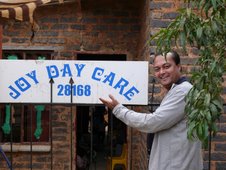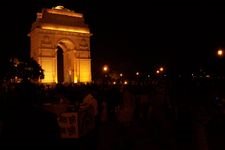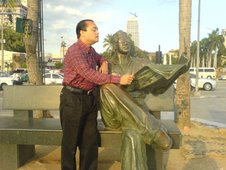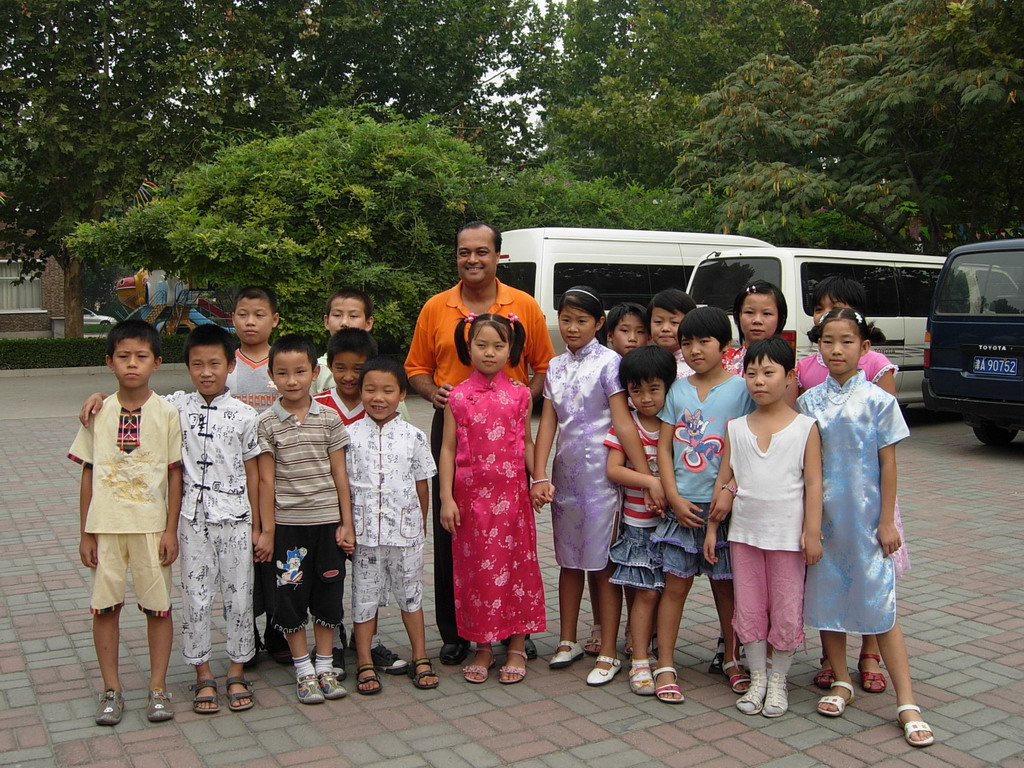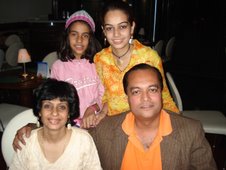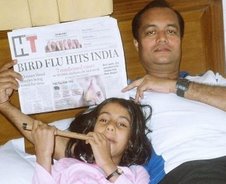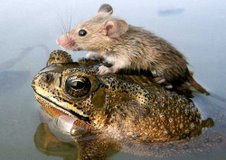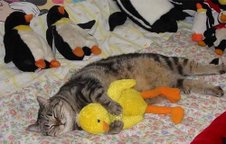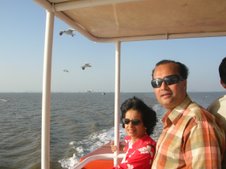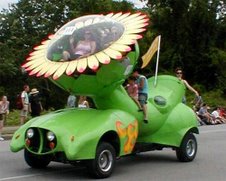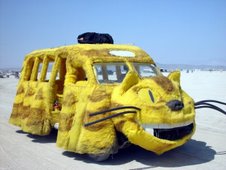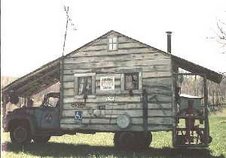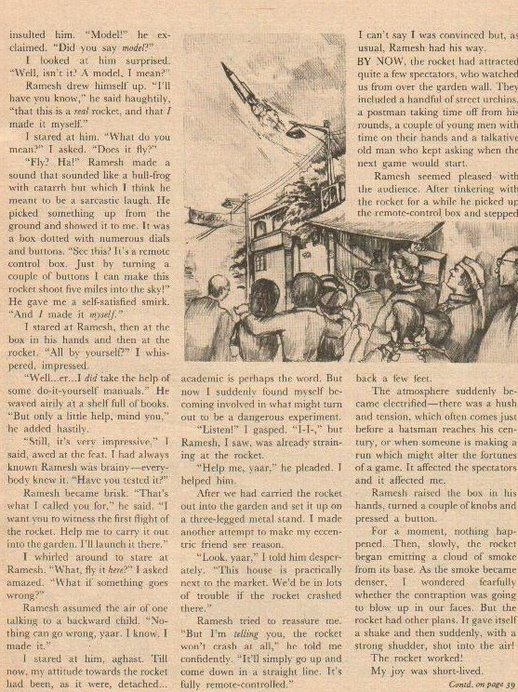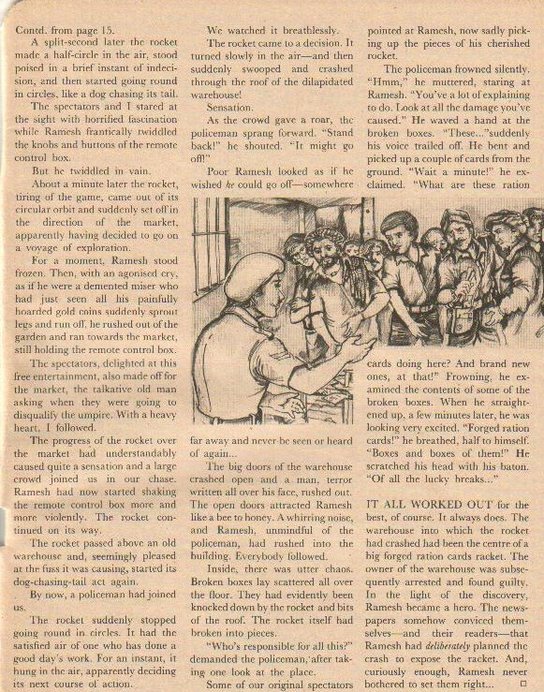Friday, December 24, 2010
An excerpt from my novel: "The Inheritance"
Built to accommodate one thousand and seventy four prisoners, the Arthur Road Jail currently housed three thousand and forty five inmates. The cell – more like a dormitory – in which Akshay Joshi was lodged had one hundred and eighty undertrial prisoners crammed into it – it had been designed to house just fifty.
Akshay Joshi had spent his nights in the jail trying to sleep in awkward positions, without much success. He already had enough accumulated sleep in his muddled up his brain to last several lifetimes. He looked forward to the illusion of space the morning release into the courtyard gave him.
Akshay Joshi was a mere shadow of the man he had been until a few days ago. Prison had been a revelation. The world here was as far removed from the life of glamour and luxury that he had been accustomed to as desert sands were from mountain glaciers. Apart from the heat and dirt and crowd and cramped spaces, it was the lack of privacy that was killing. Also demeaning and disgusting was the very close company of some of the worst dregs and scum of society – for whom the film actor Akshay Joshi was an object of curiosity, pity, mirth and ridicule. Akshay looked forward to the day his expensive lawyers would get him bailed out from this hell hole.
That day was not far away, he had been promised by his legal team.
Now, as Akshay was led by the guard to the courtyard adjacent to the jail barracks that housed his cell for his thirty minutes exercise opportunity, this bright and sunny morning in Mumbai, he prayed that he would soon be able to breathe the fresh air of freedom. As soon as he was out of this hell called Arthur Road Jail he would be able to focus his energies and resources on extricating himself from the attempt to murder charge that had been slapped on him. He would buy his freedom with all the money he had, if it came to that – but he would not return to this cesspool.
And he would use all the resources available to Satinder Singh also to get out of this mess – his lover Satinder would help Akshay stay out of jail. That was the least he could do. Otherwise, thought Akshay grimly, he would make sure that he dragged Satinder down with him…
The first thing that struck Akshay Joshi as he entered the small exercise courtyard and heard the clang of the gate being locked behind him by the jail guard, was that it was unusually empty. Normally, about one hundred jail inmates were released into this courtyard every morning, to walk around and stretch their limbs and steal a smoke from the cigarettes that had been surreptitiously smuggled into the prison premises by enterprising friends and associates of some of the prisoners.
Today there was nobody in the courtyard. Not a single soul.
Akshay wheeled around to stare at the gate through which he had entered the courtyard. It had been firmly locked by the guard who had escorted Akshay from his prison cell. The guard was nowhere in sight.
A cold hand clutched at Akshay Joshi’s heart.
His head spinning, Akshay began stumbling around the courtyard, not quite sure why. He just needed to be in motion – he did not want his brain to register the forebodings that were quickly pushing themselves into it, numbing his mind with dread.
The forebodings were not misplaced.
Seemingly out of nowhere four men appeared. Akshay knew two of them. One had been arrested for the rape and murder of two prostitutes in the slums of Dharavi. Another of the men had, it was alleged, wiped out a family of five, including three children, with an axe, in an act of vengeance for some past slight, real or imagined.
The other two men looked equally menacing. Their faces were impassive as they slowly approached Akshay.
The truth hit him with the force of a truck travelling at a hundred miles an hour. These men – and the guards – in fact the whole messed up prison establishment, had been paid off to eliminate him…
Akshay turned and ran from the four men with death imprinted on their faces. He ran round and round the courtyard in a blind frenzy of motion and action until he collapsed in a heap on the ground – already half dead from sheer exhaustion and gut wrenching fear.
The four men stood in a tight circle around him. Then one of the men raised his booted leg and kicked Akshay Joshi violently in the head. Another boot smashed into his groin. Then another boot smashed into Akshay’s writhing body. And another.
Akshay Joshi spent his last three minutes on this earth facing unremitting and cascading violence that ripped him apart from inside. He died in unimaginable pain.
Sunday, December 19, 2010
An Excerpt From My Book: "A Matter Of Survival"
I am an Olive Ridely Sea Turtle. I get my name from the olive (or green/grey) colour of my heart-shaped shell. I am also called the Pacific Ridely.
I am one of the smallest of sea turtles inhabiting the world’s oceans. I am only about two feet long and weigh just over thirty-five kilograms. The males of my species never weigh more than thirty three kilograms. I have come to the coastal waters bordering this beach called Gahirmatha, located on the eastern coast of the country called India, to nest.
Along with hundreds to thousands of my sisters, I nest two times a year on this beach and deposit between 100 and 110 eggs per nest. Hatchlings emerge from the eggs after fifty or sixty days of incubation in the nest.
After the eggs hatch, the little turtles, my children, along with many thousands of other hatchlings, will travel across the beach to the water – their new home.
Many will not make the short distance from the nest to the sea. They will fall prey to predators like vultures from the sky or jackals and snakes on the ground. But those who cross this most important challenge so early in their lives will, like me, go on to inhabit the waters of the open ocean and the wonderful world just beneath the surface of the undulating waves.
I have travelled many thousands of miles, thru’ choppy seas and dangerous waters, to get here. I do not have many enemies in the ocean – but sharks and killer whales do attack if they are hungry and a sea turtle is the only meal ticket in sight. My sisters and I migrate like this all together, in very large numbers, about twice a year. Once nesting is over, we go back from the beaches and shallow waters to the open ocean – our home.
I live in the middle of the ocean, inhabiting the upper, sunlit regions, where most ocean organisms live. Food is abundant there – lower down, in the unlit zones, water pressure is high, temperatures are cold, and food sources scarce.
I am not vey particular about what I eat: my diet includes crabs, shrimp, rock lobsters, jellyfish and tunicates. If nothing else is available, then even algae works for me. All this is abundantly available in the open ocean, in the upper, sunlit regions, where I live most of the year, except during the nesting season. Then I need to forage in coastal waters and estuaries.
The most remarkable characteristic of my species is our nesting strategy. Hundreds to thousands of us females converge in coastal waters then come ashore simultaneously in a spectacular mass-nesting event known as an “arribada” (this is a Spanish word meaning “arrival by sea”). Human scientists also term this behavior of ours as “synchronized nesting in mass numbers”.
During our massive nesting aggregations, known as arribadas or arribazones, many thousands of us female Olive Ridely Sea Turtles nest in large simultaneous waves over small stretches of beach.
We generally begin to aggregate near nesting beaches approximately two months before nesting season.
How do I know that the time is right for the arribada? Human scientists have conducted research in order to find the answer to this question and have offered several theories.
One theory suggests that we female turtles release a hormonal scent or pheromone that queues the beginning of the event. There is also evidence that these mass-nesting events coincide with certain phases of the lunar cycle. I really do not know. There is this instinct, passed down thru’ the generations, over a period of a million years, that tells my sisters and me – all of us around the same moment (give or take a few days or weeks) – when the time has come to begin our migration to the coast. For humans, this continues to be one of nature’s great mysteries.
The majority of us Olive Ridelys who live in the Indian Ocean nest in two or three large aggregations near Gahirmatha which is located in the Bhitarkanika Widlife Sanctuary of the province of Orissa in the country called India. I am told that this is one of the largest Olive Ridely nesting populations in the world, with about 400,000 of us sisters nesting every year. However, our numbers have come down very much. Legend has it that, not more than twenty years ago, 600,000 turtles, the mothers of our mothers, nested along the coast of Orissa, from Paradip to Chilika, in one week.
Since then, our numbers have reduced. We are suffering high mortality for various reasons. Many hundreds of my sisters have met their deaths due to near shore gill nets and trawl fisheries.
Humans are our biggest enemies. They hunger for our eggs. When given an opportunity, they slaughter my nesting sisters on the beach. They try to catch us at sea, with these huge nets, for commercial sale of both our meat and hides.
We Olive Ridely turtles are widely distributed across the globe in tropical and sub-tropical oceans of the world – but our largest nesting aggregations occur in the beaches of Orissa in the Indian Ocean. Nesting occurs elsewhere along the Coromandel Coast and Sri Lanka, but in scattered locations.
In the Pacific Ocean, arribadas occur only within the tropical eastern Pacific, in Central America and Mexico. In Costa Rico, arribadas occur at Nancite and Ostional beaches. There are two active arribadas in Nicaragua; Chacocente and La Flor; and a small nesting ground in Pacific Panama. My sisters tell me that there were several arribadas in Mexico, yet only one remains at Playa Escobilla in Oaxaca.
The primary threat to my species comes from human predation in the nesting habitat. The arribada with its large congregation of nesting females makes it possible for humans to collect huge quantities of eggs and kill or collect (to sell in the market) hundreds or even thousands of us turtles in one night. This practice of mass harvesting and killing over the past sixty years has caused local populations of Olive Ridelys to plummet in many areas of the globe.
I believe that the total population of my species worldwide has fallen by an astounding fifty percent during the last fifty years.
I believe that humans have labeled my species as endangered.
Another form of human intrusion that threatens us sea turtles is the permanent destruction of the nesting habitat through coastal degradation and so-called ‘development’.
‘Development’ like the huge factory complex and port that are being built near our favourite beaches in Orissa.
‘Development’ like the dredging and excavation activity that will be carried out on vast tracts of seabed near our favourite beaches to enable this port to be built. The digging up of the seabed for creation of the port will also destroy parts of the beaches we love to nest in and will disturb what human scientists call “aquatic ecosystems” – and what I know as sources of food and of life itself.
Where will we go to nest now?



